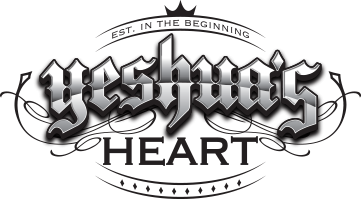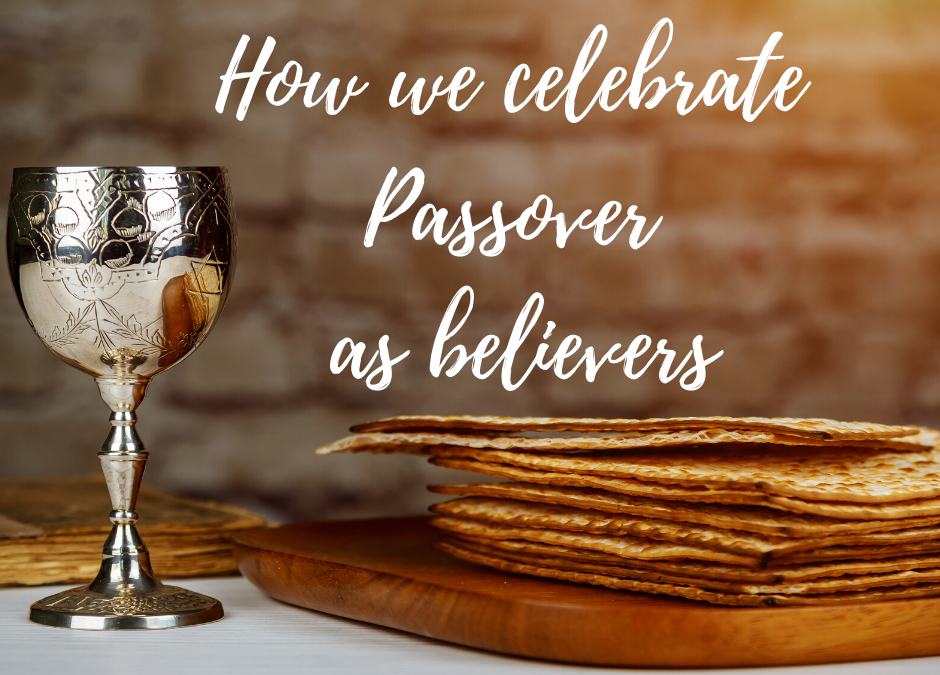Pesach, which is how you say “Passover” in Hebrew, is a very special feast called a “moed”, or appointed time, in Yehovah’s yearly calendar and is described in the Torah. It memorializes the wondrous deeds whereby Yehovah delivered His people from slavery in Egypt to freedom.*
Passover begins what is the first of 3 consecutive Feast Days known as the Spring Feasts. It is always on the 14th of the month of Aviv (literally meaning “spring”) sometimes called Nissan, when the barley harvest is ready according to God’s calendar.
Immediately following Passover, on the 15th day is the first day of the feast of Unleavened Bread. It is a “high day”, or festival Sabbath day of rest. The day after the first weekly Sabbath immediately following Unleavened Bread is the feast of “First Fruits”.
What can be confusing about Passover is that the Passover meal is not actually eaten on Passover, it is eaten after sundown, which is the first day of Unleavened bread according to God’s time clock (a new day beginning at sunset).
The Passover Lamb is killed and roasted on Passover (14th of Aviv), then eaten after sundown, launching the first day of the Feast of Unleavened Bread. Slaughter of the Passover lamb began at about 3pm, the same time Jesus (who’s name in Hebrew is Yeshua) died.
Jesus’ final meal was not a Passover meal, as he was already buried before sundown on Passover that year; he being the “Passover Lamb of God”. Rather, his final meal was the afternoon before Passover day as was the tradition of all first born males in the Galilee.
Those first born males would have eaten a final meal before fasting on the Passover day as was their tradition, eating only after sundown on the first day of the feast of Unleavened Bread when the Passover meal was eaten. This Galilean traditional meal before the fast was called “the Last Supper”.
He died on Passover and was buried before sundown as the first day of Unleavened Bread is a “high day” or Sabbath. He was buried three days and three nights, resurrecting at approx. the same time he was buried before sundown on the third day. That year it was the weekly sabbath or Saturday.
The following day was the feast of First Fruits when he revealed himself to his followers as risen, presenting himself to God as the “first fruits of mankind.”
In the second century after his death and resurrection, followers began to form what is now known as the Passover Seder (order). It is a series of traditions that symbolize many of the aspects of the first Exodus, and today believers also do many of those traditions to commemorate that exodus and to commemorate what Jesus (Yeshua) did for us.
These traditions are not biblical instructions, just traditions. Each family can do what they like. We don’t usually follow a traditional Jewish seder, since those who follow Judaism do not follow most of the scripture, but rather the instructions of the Rabbis. Jesus warns about this “leaven of the pharisees”. However, we do some of the symbolic things to remember YHVH’s grace for us as they do not go against the word.
Pesach is marked in Yehovah’s calendar as a special “moed”, which we call an appointed time, or Feast, with His people. He has given us instructions to show us how to celebrate this time.
Here are the biblical instructions for Passover:*
- We must observe a Sabbath on the first and seventh day of the Feast of Unleavened Bread (Ex. 12:16).
- All leaven and leavened food must be removed from our homes (Ex. 12:15, 13:7)
- We are not to eat leaven or leavened food for seven days (Ex. 12:15, 13:3)
- A lamb is offered at the place of Yehovah’s name, taken home, roasted and eaten (Ex. 12:8, Deut. 16:2-3). This commandment cannot be observed due to the absence of the Temple
- We are to eat matzah (unleavened bread) (Ex. 12:8, 16:3)
- We are to eat bitter herbs (Ex. 12:8)
- We are to tell the story of the exodus out of Egypt (Ex. 12:25-27, 13:8, 14-15)
- We are to do it remembrance of Yeshua (Jesus in Greek). (Matt. 26, Luke 22, 1 Cor. 11)
- Examine your heart before you partake of the bread and cup. (1 Cor. 11)
Pesach was instituted the night Yehovah delivered the children of Israel from Egypt with many plagues and wonders. He redeemed His people for them to honor Him. We have, likewise, been redeemed from slavery to sin. Therefore, when we do this, let us be reminded of our own redemption through the blood of Yeshua our Messiah. Tonight, we celebrate the Gospel by remembering the Exodus.
In our home we remove yeast and any pre packaged products containing yeast or if the ingredients say “leavening agent”. We are not dogmatic about baking soda and such.
In the time of the bible there was no baking soda or baking powder, only wild yeast used to rise their bread. If you’ve ever made bread from scratch, or captured wild yeast to make a sourdough, you know what I am talking about. So we keep it to yeast or “leavening agents” on packaging.
Getting the yeast out is a reminder that Israel had no time to wait for their bread to rise, they had to leave immediately and trust in God for their protection and sustenance. It is also a symbol of false doctrines, which is a sin. As I stated earlier, Paul uses Yeshua’s teaching and the Passover understanding of removing leaven to illustrate to believers how we are to remove false doctrines of men and follow what Yehovah says in the scripture.
What we eat on Passover:
There is no temple where Yehovah has put his name, so there is no place for sacrifice of a lamb. I usually get ground lamb and make kebobs that I “roast” over the barbecue. My husband hates lamb so I mix it with ground beef and spices so he doesn’t taste it. LOL. I’ll make a salad that includes parsley to serve as “bitter herbs” and some kind of potato or rice dish that my children like, and of course Matzah (unleavened bread). We use the store bought kind as it has the stripes and holes to remind us that “by his stripes we are healed” and the nails in his hands and feet. I also make a dessert. There are many great options that don’t include leavening.
The rest of the week we keep eating matza, but I make it myself. It’s basically a soft tortilla, so we eat a lot of Mexican food the week of Matza. I’ll post our typical menu here soon.
One tradition that Jews follow is after removing all leaven from the home, the parents purposely hide one piece of bread for the children to find. Once found, the father will then ceremoniously sweep it up, they remove it from the home and burn it.
We are doing something similar, but I made a cute crochet piece of toast for my kids to find. Once found, I give them some kind of small prize and we talk about why it’s important to remove sin and false teachings from our lives.
I also keep a jar of candy with 10 different kinds of candy in it that symbolize each plague. When you remove a piece, we talk about which plague it represents. I know it’s a lot of sugar, but it’s a feast, and a great way for kids to remember the plagues.
A great resource for a simple seder is by Seed of Abraham, with Tom Bradford. It is a great introduction, and it’s only an hour long.
You can also watch a live seder service with Jacob’s Tent which streams online.
Our Passover Scripture Reading List:
Instructions: Deuteronomy 6:17-25, 7:6-13, 10:12-13, 11:1, 11:18-21 and 11:26-29
Exodus 19:4-6
Foretelling of Return of Messiah and God’s Kingdom on Earth: Jeremiah 16:14-15
Warning of False Teachings (leaven) Matthew 15:8,9, 16:6-12
Isaiah 29:13
1 Corinthians 5:6-8
Resurrection: John 19:31-20:18
Isaiah 53:5,6
Praise: (I like the CJB version) Psalm 118, 103, 136
Blessing: Numbers 6:24-26
As with all of Yehovah’s moedim, or appointed times, we are to be closely tuned into Him. I find it deeply prophetic that this particular Passover, 2020, the whole world is suffering the judgement of Covid-19, while as believers we are instructed to observe his feast, safely at home.
Just like the first Passover, where God’s people were instructed to stay home, observe the instructions, and wait for the disease to pass over them. In addition, it’s a super moon. Scripture tells us the stars, sun and moon are for telling the calendar (times), seasons (moed, appointed times) and warnings. Those who know his signs won’t be taken as a thief. Be watchful and be ready.
*Credit to Torah Sisters for inspiring some of this article.


